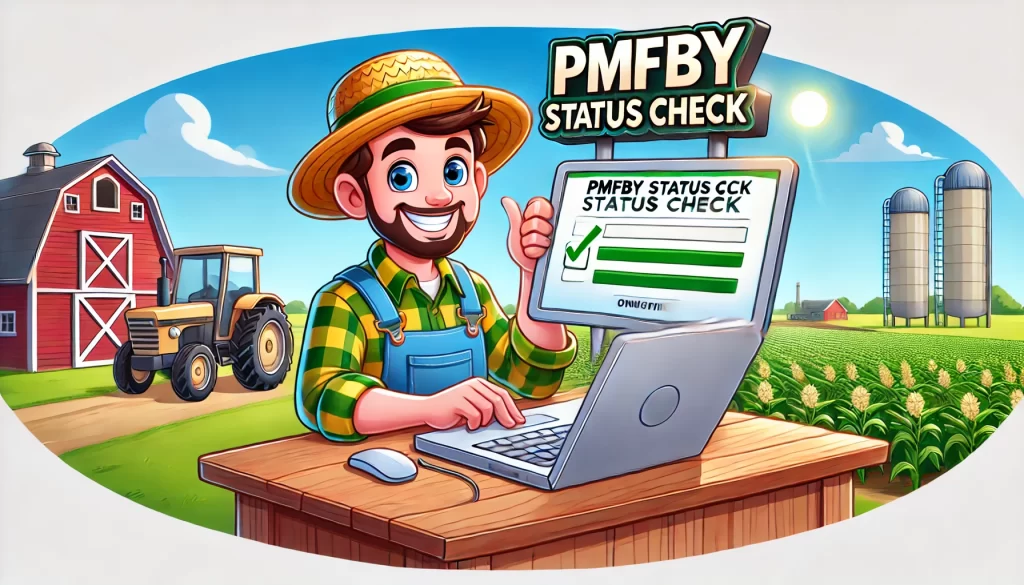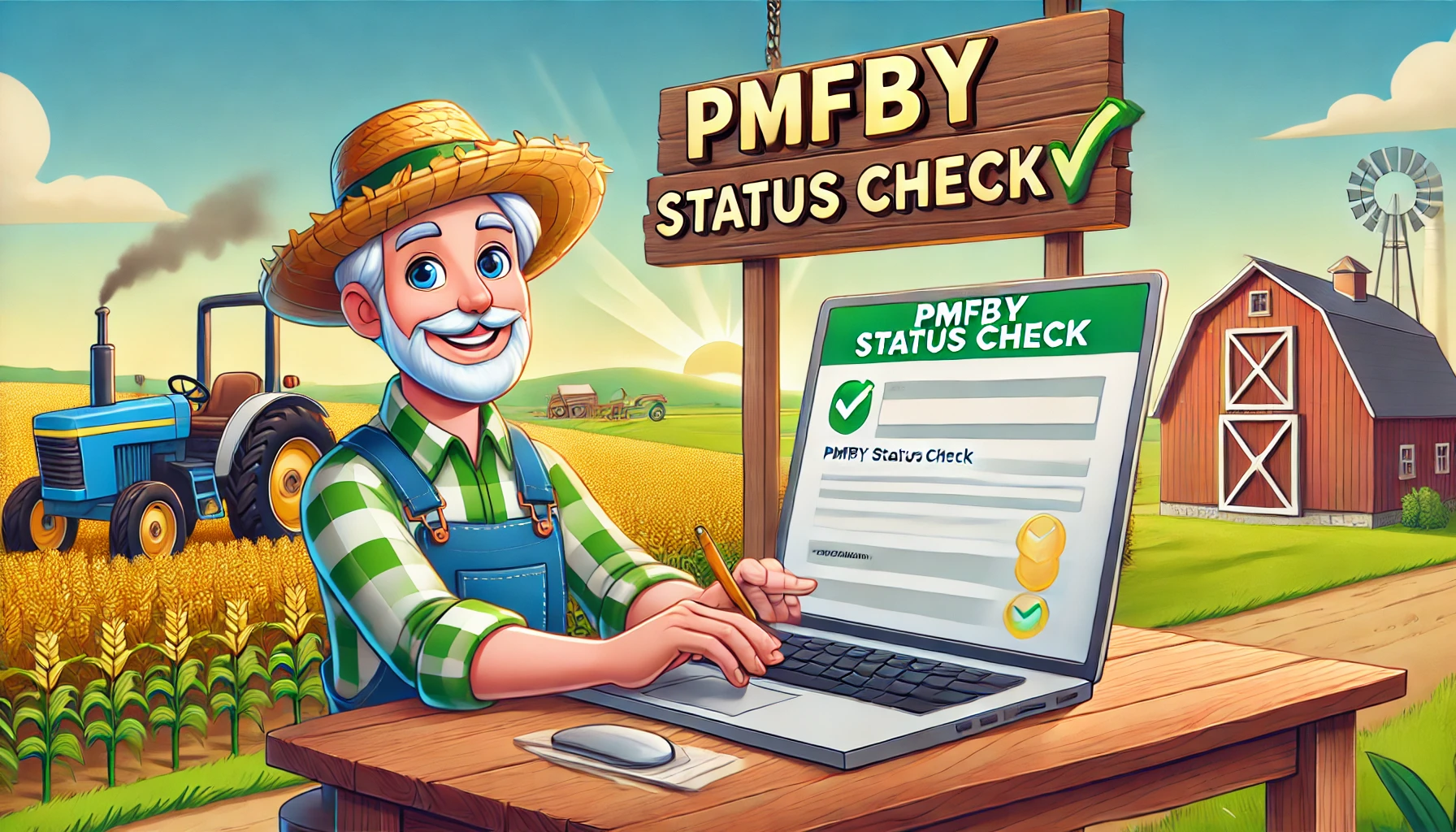Yes, the Pradhan Mantri Fasal Bima Yojana (PMFBY) provides farmers with an easy way to view their Pmfby Status Check on the PMFBY official website Pmfby.gov.in. Farmers can monitor the status of their applications and claims using their receipt number. The platform not only expedites the process of insurance claims but also helps farmers with timely updates that in turn enable them to take the desired steps as necessitated for their agricultural-related activities. Understanding the headache of sorting out claims from farmers, the online status check has been identified as a way to help things flow smoother and sometimes quicker, which will cut down on any red tape agricultural insurance payouts are known for.
Overview of the Pmfby

| Aspect | Details |
|---|---|
| Launched | 2016 |
| Objective | To provide comprehensive crop insurance to farmers against the failure of crops due to natural calamities, pests, and diseases. |
| Coverage | Covers food crops (cereals, millets, pulses), oilseeds, and annual commercial/horticultural crops. |
| Premium | Very low rates for farmers: 2% for Kharif crops, 1.5% for Rabi crops, and 5% for commercial/horticultural crops. |
| Technology Use | Utilizes technology such as remote sensing and mobile apps for quick claim settlement and accurate crop yield data. |
| Implementation | Implemented across India with the collaboration between the central government, state governments, and multiple insurance companies. |
| Claim Settlement | Promises quicker and transparent claim settlement processes. |
| Subsidy | The premium cost over and above the farmer’s contribution is subsidized equally by the Central and State Government. |
The Government of India implemented a key initiative, “Pradhan Mantri Fasal Bima Yojana PMFBY,” to provide a single agriculture crop insurance product for all types of crops and farmers through their respective states. Launched in 2016, the scheme covers financial risks associated with crop losses due to natural calamities, pests, and diseases. The PMFBY has made the insurance cover very affordable, which helps farmers to protect themselves against potential losses, leading them not to be in financial distress and thereby continue their farming.
The scheme is so broad that it covers practically every food and oilseed crop and extends to horticultural crops at least in a small way as well as commercial ones. It keeps premium rates low for farmers—1.5% to 2% of sum insured over Kharif crops; (ii) up to 3% Rabi crops and commercial/horticultural corps, as state subsidy, and the balance liability will be borne by center-states on a 50:50 basis, with no cap on central share.
PMFBY is notable for its technology-driven assessment of crop loss. The scheme uses remote sensing, smartphones, and drones to capture crop yields with minimal human intervention and in a documented manner, leading, e.g., to quick payouts of claims for the full produce loss prevented based on measurement over these plots after one more week from this harvest window has closed! This not only brings transparency into the system but also speeds up the whole thing; hence, it facilitates farmers to get in-time financial help. It has also been conceived in a way that will minimize the bureaucratic difficulties historically encountered by Indian farmers with agricultural insurance, ensuring an easier process for them to obtain what they deserve.
Objectives and Goals
The Pradhan Mantri Fasal Bima Yojana (PMFBY) was established with several key objectives and goals aimed at supporting India’s vast agricultural sector:
- Risk Mitigation: Provide insurance coverage and financial relief to the farmers in case of failure of any notified crop as a result of natural calamities, pests, and diseases.
- Income of Farmers: To make certain fair returns to farmers for their produce and thereby sustainable farming, which is an essential prerequisite in the maintenance of supply lines as well as economic stability.
- Promote farming methods: The goal is to encourage environmental advancements in farming practices. Farmers will now have an edge and can invest in better technology and seeds without worrying about crop failures as they used to sometime back.
- Comprehensive Coverage: For cheap comprehensive insurance against losses in yield to stabilize farm incomes.
- LATL: To speed up the process and to be more efficient in distributing relief and claim settlements. This is in line with PMFBY’s goal of reducing timelines and making it easier for farmers whose crops have failed to receive adequate compensation.
- Incentive for Crop Diversification: The scheme also provides an incentive to diversify your crops through the provision of crop insurance. Providing a safety net might give farmers more confidence to diversify or try new crops.
- Affordable Insurance: Provide an insurance mechanism that creates a low-hanging fruit for the margin farmers. The remaining premium is subsidized by the government in order to ensure that insurance remains affordable for farmers of all categories.
Through the underlying objectives of covering pre-sowing to post-harvest risks, PMFBY aims not only at creating a conducive climate for up-scaling and next-level technological upgrades in agriculture across India but also to enable global competitiveness through low production costs and technologies.
Coverage and Benefits
The Pradhan Mantri Fasal Bima Yojana (PMFBY) provides extensive coverage and numerous benefits to safeguard the interests of farmers across India. Here are the key aspects of the scheme’s coverage and the benefits it offers:
Coverage:
- All Food and Oilseeds Crops: The scheme includes all the food crops (cereals, millets & pulses) and oilseeds as well as annual commercial/horticultural crops.
- Coverage of Multiple Risks: PMFBY insures farmers from various natural calamity risks like flood, drought, and landslides to the perils of pests attacks that gather over a crop as well as diseases affecting crops.
- Localized Calamities: This scheme is also effective for isolated farms in the covered area hit by localized calamities like hailstorms, landslides etc.
Benefits:
- Farmer Insurance Cover: Farmers get full amount insured cover for their crops that not only secures them from natural calamities but also gives financial security with the assistance in money they receive when a loss happens.
- Premiums at Inexpensive Charges: You can gain from a highly subsidized price. The Government of India pays the entire actuarial premium on behalf of farmers for Kharif Crops—2%o, Rabi crops-1.5%, and Commercial & Horticulture crops,pays 5%.
- Technology Usage: To give effect to the quick and accurate crop loss assessment, PMFBY integrates use of modern technologies. For instance to accelerate the claim process it could be used in satellite imagery, remote sensing technology and drones.
- Post-Harvest Losses: The scheme also includes post-harvest losses of the crops for which claims are allowed if due to cyclone, unseasonal rainfall and entry restriction only (maximum up to 14 days).
- Prevented Sowing: In a situation, where the farmers are prevented from sowing/planting due to adverse weather conditions then compensation is provided.
- On-Account Payment: In the view of adverse seasonal conditions during crop season, to mitigate hardship faced by farmers On-account payment may be made against payable claim.
PMFBY was introduced to provide both financial support as well as risk mitigation measures that reduce the amount of uncertainty due to losses in agricultural operations. Such a well-rounded strategy enables the financial security of farmers and overall benefits to agriculture sector development in India.
Eligibility Criteria
| Eligibility Criteria | Details |
|---|---|
| Farmers | All farmers including sharecroppers and tenant farmers growing notified crops in the notified areas are eligible. |
| Crops Covered | Food crops (Cereals, Millets, and Pulses), Oilseeds as well as Annual Commercial/Horticultural Crops are covered under the scheme. |
| Areas Covered | All areas across India where a particular crop is grown and notified by the state government are eligible for coverage. |
| Premium Requirements | Farmers must pay a very nominal premium of 2% for Kharif crops, 1.5% for Rabi crops, and 5% for commercial and horticultural crops. |
| Documentation Required | Farmers need to provide documentation related to land records, details of the crop sown, and any previous insurance covers. |
| Application Window | Applications must be submitted within the deadlines specified by the state governments each season. |
| Technology Adoption | Farmers who adopt and integrate technology-driven solutions for farming might receive additional benefits under specific conditions. |
Required Document
| Required Documents | Description |
|---|---|
| Identity Proof | A valid government-issued ID such as Aadhaar Card, Voter ID, PAN Card, etc. |
| Land Documents | Land records that prove ownership or tenancy/ sharecropping details. |
| Bank Account Details | Bank account number and IFSC code to facilitate the transfer of claim amounts. |
| Sowing Certificate | Issued by the concerned agricultural officer or attested by the Gram Panchayat, certifying that the crop has been sown. |
| Previous Insurance Documents | If applicable, documents relating to any previous crop insurance. |
| Photographs of the Crop | Recent photographs of the crop, which might be required at the time of claim. |
Premium Rates
| Crop Type | Premium Paid by Farmer | Government Subsidy |
|---|---|---|
| Kharif Crops | 2% of the insured amount | Balance premium up to the actuarial premium rate is subsidized equally by the Central and State Government. |
| Rabi Crops | 1.5% of the insured amount | Same as Kharif; the balance premium is subsidized. |
| Annual Commercial and Horticultural Crops | 5% of the insured amount | Same as above; higher premium due to higher risk associated with these crops. |
Check Pmfby Status Check Online at Pmfby.gov.in by Reciept Number
- Visit the official PMFBY portal at pmfby.gov.in.
- Click on the ‘Farmer Corner‘ or a similar designated section on the homepage.
- Select the option labeled ‘Application Status‘ or ‘Check your Application Status‘.
- Enter your receipt number in the provided field. You might also need to enter additional details such as the registered mobile number or Aadhaar number, depending on the portal’s requirements.
- Click on the ‘Submit‘ button to view the status of your PMFBY application.
- Review the displayed status information which will include details of your application’s progress, approval status, or any required actions.
These steps will guide you through checking the status of your crop insurance application on the PMFBY website using your receipt number.
Also Check
Conclusion
The facility to track PMFBY applications online at Pmfby.gov.in will help farmers to a great extent when they are making efforts for the scrutiny of their crop insurance claims. It makes the process more efficient and also ensures transparency and trust in the system. The PMFBY portal also enables farmers to keep track of their applications by using it with their receipt numbers, which will indicate them as situations arise in the fields and take immediate action. These innovations in the space of managing agricultural insurance just reflect the government’s commitment towards using technology for better governance and welfare of the farming community while keeping them more secure financially to play their vital role in the economy.
Pmfby Status Contact Details
| Contact Detail | Description | Contact Information |
|---|---|---|
| Toll-Free Helpline | For general inquiries and support | 1800-180-1551 |
| Official Website | For checking status, application, and information | pmfby.gov.in |
| Email Support | For detailed queries and support via email | [email protected] |
| Regional Offices | Contact specific to state or region | Details are available on the PMFBY portal |
| Direct Contact | For urgent or specific assistance | Phone numbers available at regional PMFBY offices |

Vikas Gupta is an insightful content creator and financial analyst, educated in economics and public administration. At yojanastatuschecktoday.in, he specializes in simplifying complex government schemes, aiming to empower readers with vital information. His expertise helps citizens navigate and utilize government initiatives effectively, ensuring access to essential updates and developments.
